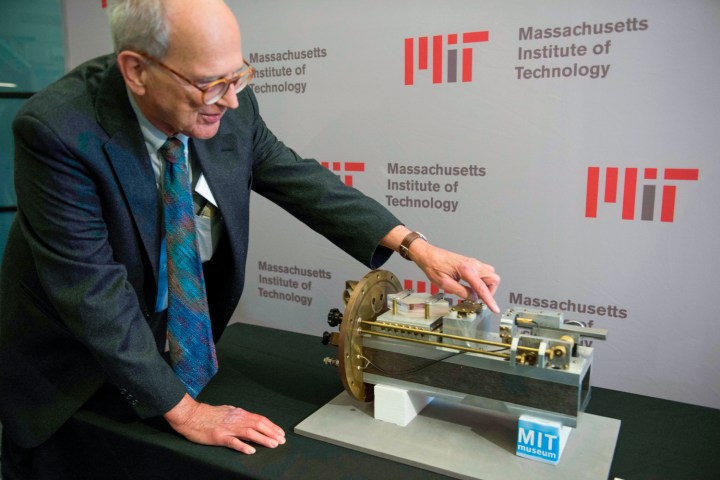
Awarded annually by the Nobel Foundation and the Royal Swedish Academy of Sciences, the Nobel Prizes in physics, chemistry, and medicine have been given to some of science’s most accomplished individuals. Winning the award puts honorees in the company of giants like Marie Curie, Albert Einstein, and Niels Bohr.
Here’s a brief breakdown of the tremendous achievements of this year’s winners.
Physics
Winners: Rainer Weiss, Barry C. Barish, and Kip S. Thorne
Why they won: “For decisive contributions to the LIGO detector and the observation of gravitational waves”
Over a century ago, Einstein had this wild idea that the collision of two immensely dense objects could create ripples in the very fabric of spacetime. He never saw these “gravitational waves.” No one had. But last year, physicists and astronomers at LIGO (a specially designed facility for detecting cosmic gravitational waves) and Virgo Scientific Collaboration announced what the Royal Swedish Academy now calls “a discovery that shook the world.”
From their sophisticated observatories on Earth, scientists recorded gravitational waves from the collision of a pair of massive black holes some billion light years away. Who would’ve thunk Einstein was right?
Although thousands of scientists were involved in the gravity wobbling study, Weiss, Barish, and Thorne were awarded the honor due to their leadership in developing LIGO.
Why it matters: Besides validating a seemingly crazy and century-old prediction made by arguably the greatest scientist to ever live, the gravitational wave study also offers a fascinating glimpse at the foundation of our physical reality.
Chemistry
Winners: Jacques Dubochet, Joachim Frank, and Richard Henderson
Why they won: “For developing cryo-electron microscopy for the high-resolution structure determination of biomolecules in solution.”
In the world of proteins, form and function go hand in hand. Determining the shape of a biomolecule like a virus is often a significant step toward revealing how it does what it does. And although methods exist for studying the structure of proteins, the primary technique requires crystallizing the molecules, many of which are just too squishy.
The method developed by Dubochet, Frank, and Henderson allows scientists to build 3D images of biological molecules, which may help provide new insight into the inner workings of our cells.
“Soon there are no more secrets,” said Sara Snogerup Linse, committee chairwoman and professor of physical chemistry at Sweden’s Lund University. “Now we can see the intricate details of the biomolecules in every corner of our cells, in every drop of our body fluids.”
Why it matters: Cryo-electron microscopy allows scientists to make 3D images of molecules that were previously tough to model. The method has already helped scientists study diseases like Zika virus and unravel the structure of proteins critical to our internal body clocks.
Medicine
Winners: Jeffrey C. Hall, Michael Rosbash and Michael W. Young
Why they won: “For their discoveries of molecular mechanisms controlling the circadian rhythm.”
There are ever-ticking clocks in our bodies that play a vital role in nearly everything we do — influencing physiological functions like managing our core body temperature, brain wave activity, and hormone production. Known as the circadian rhythm, this process is present to different degrees in every living being. And although it’s always there, science hasn’t always understood how it works.
The research honored with the Nobel Prize examined the internal mechanism of an inglorious creature, the fruit fly, and began to reveal what actually controls circadian rhythm. It turns out that a gene the scientists were analyzing encodes a protein which gathers in cells at night and disperses during the daytime.
This was no small measure. Hall, Rosbash, and Young conducted this research over decades, using the fly as a model organism to learn more about the biological functions of humans and other animals with clocks that function via similar mechanisms.
Why it matters: The genes and proteins these scientists analyzed have a massive impact on our everyday lives. Understanding the basis of circadian rhythm sheds light on aspects of behavior, sleep cycles, and metabolism. The Nobel committee honored Hall, Rosbash, and Young’s work for helping illuminate how an individual’s lifestyle may coincide or clash with her internal rhythm, and how adjusting one’s lifestyle accordingly could benefit well-being.





